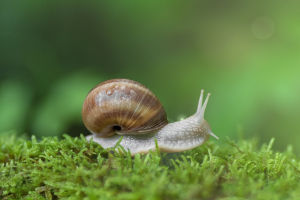Rhinos are truly remarkable creatures. As the second largest mammals on Earth, after elephants, rhinos play an essential role in their ecosystems.
With five species spread across Asia and Africa, each rhino species contributes uniquely to the environment.
1. Why are rhinos important for the environment?
Rhinos are environmental engineers! These keystone species help shape their habitats in multiple ways. In Africa, for example, rhinos roll in the mud to create water holes that become critical water sources for many animals.
Their daily dung, which can amount to more than 20 kilograms (44 pounds), fertilizes plants and helps disperse seeds, benefiting other herbivores. Moreover, as they roam and feed, rhinos help maintain the balance of plant and animal life.
The movement of Sumatran rhinos, for instance, creates clearings in the forest, allowing plant species to grow and facilitating access to food for other wildlife.
2. How many rhino species exist?
There are five species of rhinos:
- White Rhinos
- Black Rhinos
- Greater One-Horned Rhinos
- Sumatran Rhinos
- Javan Rhinos
While they may have names like black and white, all rhinos have grey or brown skin. They are distinguishable by size and horn structure. Black rhinos have a pointed upper lip, ideal for grabbing leaves, while white rhinos have a squared lip suited for grazing on grasses. White rhinos are the largest species, weighing between 2,000 to 4,000 kilograms (4,400 to 5,300 pounds).
3. Where do rhinos live?
Rhinos are found in Africa and Asia. The white rhinos are mostly found in Africa’s grasslands, shrublands, and savannahs, particularly in South Africa, Namibia, Kenya, and Zimbabwe.
In contrast, black rhinos inhabit various habitats like forests, woodlands, and semi-desert savannahs, spread across countries such as South Africa, Kenya, and Tanzania.
The Sumatran and Javan rhinos live on the islands of Sumatra, Borneo, and Java, primarily in dense forests and marshes. Greater one-horned rhinos mostly reside in India and Nepal’s grasslands.
4. What do rhinos eat?
Rhinos are herbivores, feeding on plants, grasses, leaves, and shoots. Their diet depends on their habitat. White rhinos mainly graze on grasses, while black rhinos prefer succulent plants and leaves. Sumatran rhinos eat a variety of plants, and Javan rhinos favor moist plants near water.
5. Are rhino horns the same as elephant tusks?
Rhino horns are made of keratin, the same substance found in human hair and fingernails, whereas elephant tusks are composed of ivory, a material made of dentine. Rhino horns grow continuously and can be trimmed without causing harm to the animal.
6. What do rhinos use their horns for?
Rhinos use their horns for a variety of purposes, from displaying strength and dominance to defending their territory. They can also dig for food or move their dung to mark their territory.
7. Are rhinos aggressive?
Rhinos are not typically aggressive unless provoked, but they can be very protective of their young. Female rhinos, especially, will charge if they feel their calf is threatened.
8. What is a baby rhino called?
A baby rhino is called a calf, and the group of rhinos is known as a "crash." A rhino calf can weigh up to 50 kilograms (110 pounds) at birth.
9. Do rhinos have predators?
Young rhinos are vulnerable to predators like big cats and crocodiles. However, rhinos have few natural predators. Humans, unfortunately, are the greatest threat due to poaching and habitat destruction.
10. Are rhinos endangered?
Sadly, many rhino species are endangered due to poaching and habitat loss. Rhino horns are highly sought after in illegal markets, fueling poaching activities. Habitat loss, caused by human expansion, poses another major threat.
11. How many rhinos are left?
Rhino populations are rapidly decreasing, and here are the latest numbers:
White rhinos: 10,080 remaining (with the northern white rhino critically endangered, with only 2 left).
Greater one-horned rhinos: 2,100 remaining (with a growing population).
Black rhinos: 3,124 remaining (critically endangered).
Sumatran rhinos: 30 remaining (critically endangered).
Javan rhinos: 18 remaining (critically endangered).
What can you do to help protect rhinos?
Organizations like IFAW (International Fund for Animal Welfare) are working globally to reduce human-wildlife conflict, restore habitats, and prevent poaching.
It’s crucial for us to support such efforts and raise awareness to protect these magnificent creatures. You can contribute by supporting conservation programs, spreading the word, and making more sustainable choices to preserve rhino habitats.
Rhinos need us now more than ever. Every small action counts toward securing a future for these extraordinary animals.
Top 10 Rhino Facts | Animal Fun Facts | WWF
Video by WWF UK


